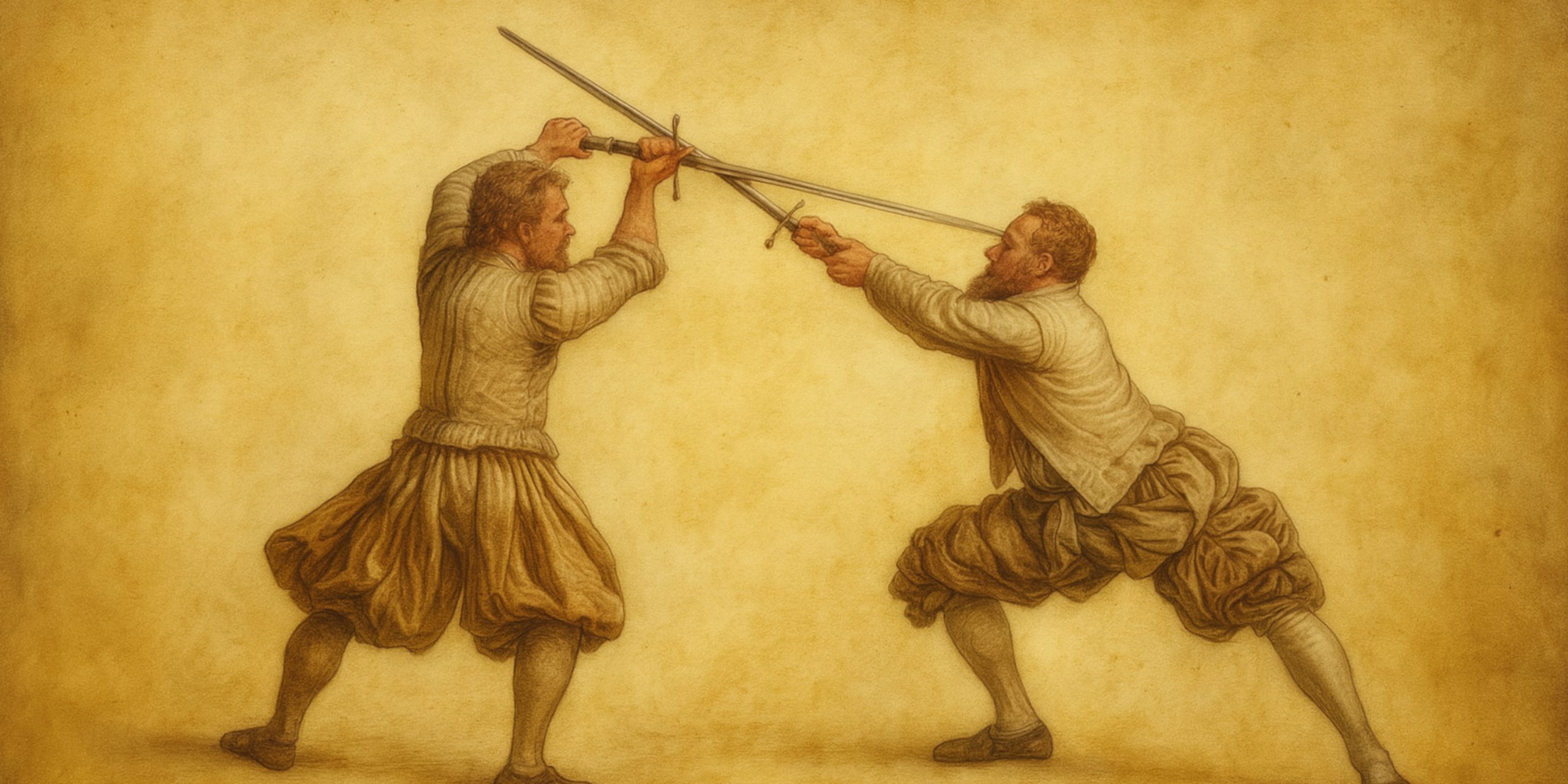
Historical European Martial Arts (HEMA) draws its foundation from the fighting manuals written by historical masters of arms. These texts, known as treatises or fechtbücher, are the bedrock of modern reconstruction. For anyone serious about understanding the origins of longsword, sabre, rapier, or other traditional weapons, studying these primary sources is essential.
Below is a selection of the most respected historical treatises, each contributing something unique to the art.
Fiore dei Liberi – “Fior di Battaglia” (The Flower of Battle)
Date: circa 1400s
Origin: Italy
Weapons Covered: Longsword, dagger, grappling, spear, mounted combat
Fiore’s manual is one of the earliest known martial arts texts from Europe and arguably one of the most comprehensive. His systematic approach offers not only detailed illustrations but also structured pedagogy. His emphasis on fighting in the three tempi and clear division between posta (guards) has made this a cornerstone for longsword practitioners.
Johannes Liechtenauer Tradition – Various Authors
Date: 1389 onwards
Origin: Germany
Weapons Covered: Longsword, messer, dagger, wrestling
Liechtenauer did not write a manual himself but passed down a cryptic Zettel (verse) which was later expanded upon by his students such as Peter von Danzig, Ringeck, and Lew. This lineage defines the German school, with concepts like Hängen, Fühlen, and Zornhau becoming core study material in HEMA circles.
Paulus Kal – “Fechtbuch”
Date: mid-15th century
Origin: Germany
Weapons Covered: Longsword, spear, dagger, poleaxe, armoured combat
Kal’s treatise is notable for its integration of Liechtenauer’s teachings with courtly and military elements. His manuscript includes vivid illustrations and a strong focus on armoured fighting and battlefield context.
Hans Talhoffer – Multiple Fechtbücher
Date: 1440s–1460s
Origin: Germany
Weapons Covered: Longsword, messer, dagger, spear, judicial duels, mounted combat
Talhoffer’s eclectic style, flamboyant imagery, and wide coverage of weapons make his works both engaging and challenging. While less structured than Fiore or Ringeck, his treatises offer unique insights into the realities of judicial duels and noble combat.
Joachim Meyer – “Gründtliche Beschreibung der Kunst des Fechtens”
Date: 1570
Origin: Germany
Weapons Covered: Longsword, dusack, rapier, staff, pike
Meyer represents the evolution of the German tradition into a more civilian-focused art. His book blends martial practicality with Renaissance sporting elements, ideal for those interested in the transition between battlefield and fencing hall. His clear progression of drills and illustrated sequences remains highly accessible.
Giacomo di Grassi – “Ragione di adoprar sicuramente l’Arme”
Date: 1570
Origin: Italy
Weapons Covered: Rapier, sword and buckler, two-handed sword
Di Grassi’s work offers a thoughtful analysis of movement, distance, and timing. His text is one of the earliest to outline fencing as a science, aimed at both self-defence and duelling. His methods show a shift towards thrust-centric techniques typical of the rapier.
Ridolfo Capo Ferro – “Gran Simulacro dell’Arte e dell’Uso della Scherma”
Date: 1610
Origin: Italy
Weapons Covered: Rapier
This highly influential treatise refines the Italian rapier system. Capo Ferro’s use of geometry, precision, and emphasis on the single-time thrust shaped the development of classical fencing. It’s a must-read for serious rapier students and a foundation for Baroque fencing systems.
George Silver – “Paradoxes of Defence” and “Brief Instructions”
Date: 1599–1605
Origin: England
Weapons Covered: Backsword, short sword, sword and buckler
Silver’s works stand out for their nationalistic tone and critique of the Italian rapier. He defends traditional English swordplay with a pragmatic, often blunt tone. Despite his bias, his writings are valuable for understanding native British methods and the cultural clash between schools.
Donald McBane – “The Expert Sword-Man’s Companion”
Date: 1728
Origin: Scotland
Weapons Covered: Smallsword, backsword, broadsword
McBane’s manual is part treatise, part autobiography. He recounts duels, brawls, and battles with unvarnished detail. His instruction on smallsword and broadsword is practical and grounded in lived experience, offering a bridge between battlefield and street combat.
Choosing the Right Treatise
The choice depends on your discipline. Longsword practitioners tend to favour Fiore or the German school. Rapier students often look to Capo Ferro, while those studying sabre or backsword may start later with British or Scottish sources.
Most modern HEMA groups work with translated versions, though growing numbers are learning to read original languages for clarity and fidelity. Facsimiles, transcriptions, and critical editions are widely available online and through specialist publishers.
The Seven Swords takeaway
Studying historical treatises is not about memorising old techniques. It’s about engaging with the minds of martial masters who lived in a violent world. Their teachings, though centuries old, still hold practical wisdom for today’s practitioner. The deeper you read, the more you understand that HEMA is as much about interpretation and context as it is about movement.



